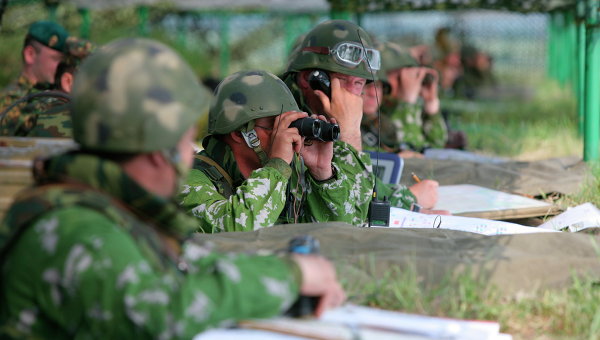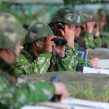
Kondratyev, Network-Centric Warfare and the Race Against Time (Part Two)
Publication: Eurasia Daily Monitor Volume: 10 Issue: 36
By:

Russia’s political-military leadership continues to display interest in the future modernization of the conventional Armed Forces rooted in the adoption network-centric capabilities. The set of interlinked challenges this will present, in terms of technology, force structure, military manpower and combat training are far more revolutionary than any of the top brass or politicians realize. Lieutenant-Colonel Aleksandr Kondratyev consistently states that the concept itself must be thoroughly understood before defining the implications for rearmament. He also suggests a range of complimentary activities in order to facilitate the close cooperation of the defense ministry, the defense industry and research institutes as this process unfolds. Kondratyev has, however, started to push his writings to promote the idea that network-centric capabilities present not only a force multiplier for Moscow but can be cost effective (see EDM, February 19).
Kondratyev’s most recent work has extended to considering the impact of network-centric theory on the protection of critical infrastructure and has examined planned information integration approaches within the United States intelligence community. In an article in Zarubeznoye Voyennoye Obozreniye, Kondratyev reminded his readers that modern warfare also regards civilian infrastructure as one of the most important targets for destruction. Consequently, critical infrastructure research has become a priority among the most advanced nations, but the modeling involved has required a degree of uncertainty particularly linked to the facility risk index (Zarubeznoye Voyennoye Obozreniye, October 2012).
By examining the recent history of critical infrastructure research in the US, Kondratyev highlights the manner in which Washington is integrating systems across a range of government agencies and analytical tools to reduce the level of uncertainty in such approaches. He notes the limits of simulation in critical infrastructure research due to its reliance upon graph theory, but concludes that the struggle to improve standards in this area are rooted in the information era: “Thus, foreign countries presently have developed an enormous number of models used for research of ship systems, university cities, large power distribution networks, waterways and much more. The main task has been to integrate them in a single hardware-software complex, which will enable heads of corresponding management echelons to make a substantiated and correct decision in getting an answer to the question: ‘What must be defended or destroyed and how much will this cost [the efforts and resources expended]?’” (Zarubeznoye Voyennoye Obozreniye, October 2012).
In February 2013, Kondratyev turned his attention to how information tools and systems integration influence the US intelligence community. His starting point was noting that James Clapper had set March 2013 as the starting point in a five-year transition to create modernized computer infrastructure across all US intelligence agencies. Kondratyev asked whether this represents an attempt by the United States to build and secure its information superiority; and if so, would this demand a response from Moscow (Nezavisimoye Voyennoye Obozreniye, February 8).
Kondratyev explained that this involves a gamble on the use of cloud computing as a way of integrating the information space for US intelligence agencies, as well as facilitating all important budget savings over the next decade. US experts believe that a single distributed cloud computing environment will be cost effective and offer a new level of information security. This represents the next stage in the reform of the US intelligence community, and the use of information tools and systems integration is the key to its success. Cloud technologies will form the basis for the new information space for US intelligence (Nezavisimoye Voyennoye Obozreniye, February 8).
Kondratyev asserts that the main direction of intellectual effort in the information era is defined by and associated with “balanced globalization” of the fundamental operations of information (collection, storage, processing) to automatic processing of its increasing flows; this will demand an integration of computing resources through global networks of industrial technologies of distributed computing. However, Kondratyev doubts whether this will actually result in a single information space, questioning if it can achieve full integration. “The situation is similar to the current state of various databases, with huge amounts of data that have already been driven. Compiling all this data is extremely hard, and with cloud computing it is made even more difficult” (Nezavisimoye Voyennoye Obozreniye, February 8).
Kondratyev believes it would be a mistake for Russia to blindly follow the US in cloud computing as the way forward to integrating existing intelligence structures. He believes that Russian science and the domestic defense industry can find a more cost effective alternative to cloud computing as the next step in forming a single information space for intelligence and military structures. The prototype in Russia is the experimental “control computer on a chip,” which he sees as two to three years away from production and may allow Moscow to avoid choosing between strictly grid-based or cloud-based computer integration. If the “control computer on a chip” successfully enters production, it may offer Russia a historic opportunity to avoid playing catch-up and actually surpass the US in advanced technologies (Nezavisimoye Voyennoye Obozreniye, February 8).
While Russia’s leading specialists on network-centric approaches to warfare are not advocating blindly copying the US, they understand that such advanced technology-based approaches do not offer a panacea. However, Kondratyev represents this as a gamble for the state. No alternative exists for Russia, a country heavily reliant upon its nuclear capabilities to guarantee its security. Network-centric capabilities would present a force multiplier, but Kondratyev also wants to convey the message that it can be cost-effective. His focus is shifting into critical infrastructure protection and intelligence integration, with the key being how information technology is radically transforming these areas. The work of such Russian analysts guides the top brass to believe that network-centric warfare is, indeed, the way forward. Most importantly, however, it is possible to discern that Russia’s military intelligence also believes the network-centric agenda is alive and well, despite the shambles associated with the reforms initiated by former Defense Minister Anatoly Serdyukov. For Russian military thinkers like Kondratyev, this push into the information-era thus constitutes the real “race against time.”




